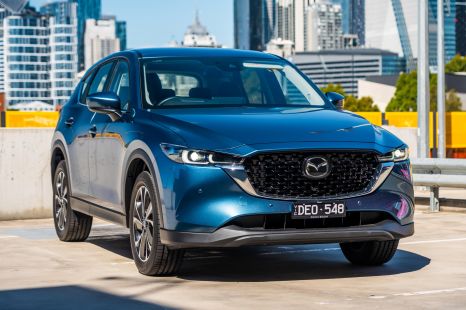

James Wong
2025 Mazda CX-5 G25 Touring AWD review
5 Days Ago
The Volvo XC90 is ageing like fine wine, and the flagship PHEV offers power and efficiency – though its EV range is on the lower side.
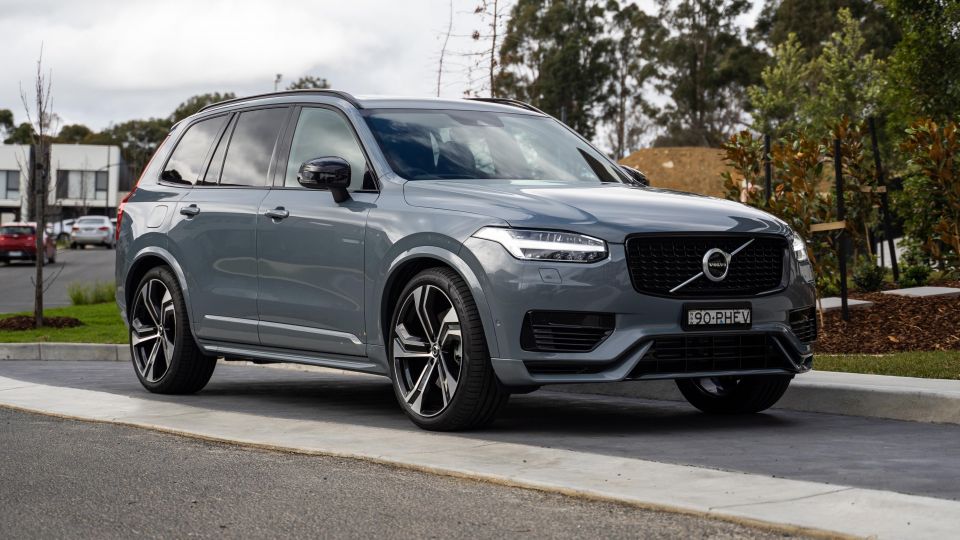
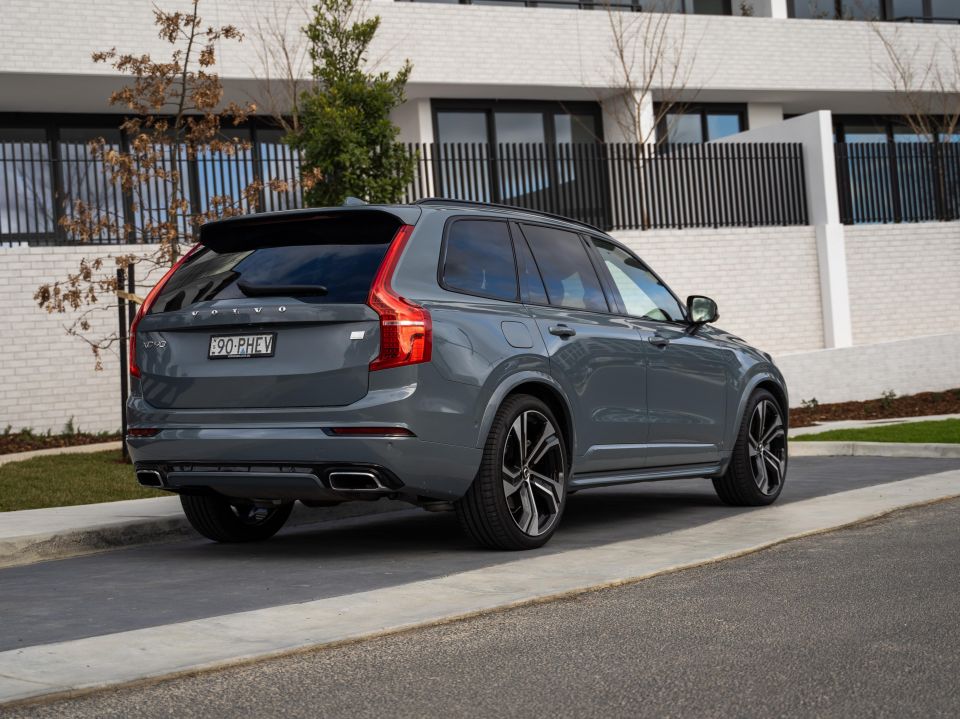

Marketplace Editor
New from
$89,990
excl. on-roads

Marketplace Editor
New from
$89,990
excl. on-roads


Marketplace Editor
New from
$89,990
excl. on-roads

Marketplace Editor
New from
$89,990
excl. on-roads
Quickly see how this car stacks up against its competition. Select any benchmark to see more details.
Where expert car reviews meet expert car buying – CarExpert gives you trusted advice, personalised service and real savings on your next new car.
The Volvo XC90 has long been a fan favourite in the premium family SUV segment, with the first generation alone lasting more than a decade in production.
Now half a decade into its second generation, the big Volvo has seen rivals come and go, and now faces stiffer competition than ever from Audi, BMW and Mercedes-Benz.
Ahead of an all-new model with electric power is revealed in 2022 and hits the market in 2023, Volvo has rebranded its plug-in range with the ‘Recharge’ banner, and will introduce mild-hybrid versions of its combustion-powered line-up as part of 2022 rolling update in the coming months.
Does the current plug-in hybrid XC90 Recharge still make a case for itself in the meantime?
Here on test we have the flagship 2021 Volvo XC90 Recharge, formerly known as the T8 ‘TwinEngine’ R-Design.
Pricing for the top-spec PHEV starts at $116,990 before on-road costs.
The range opens at $86,990 for the entry-level Momentum variant, which gets a mild-hybrid four-cylinder turbo petrol engine.
Our test car featured a handful of options, including the Climate Pack ($600), power-folding rear headrests ($275), ventilated front seats ($2950) and metallic paint ($1900).
As tested, the vehicle you see here costs $122,715 before on-road costs.

In PHEV guise the XC90 is in the thick of the large premium SUV segment, with a slew of rivals playing in the $110,000 to $130,000 bracket, though only a fraction offers a plug-in hybrid option in Australia.
Key rivals
All prices exclude on-road costs
There’s a couple of things to note here. The X5 and Range Rover cannot be optioned with seven seats in PHEV guise, and the Lexus RXL is a self-charging hybrid rather than the plug-in type with limited electric range.
Further, the Q7, GV80, RX, GLE and Touareg variants listed above are all six-cylinder versions, whereas the X5, RR Sport and XC90 PHEVs all feature four-cylinder engines, albeit with electric assistance.
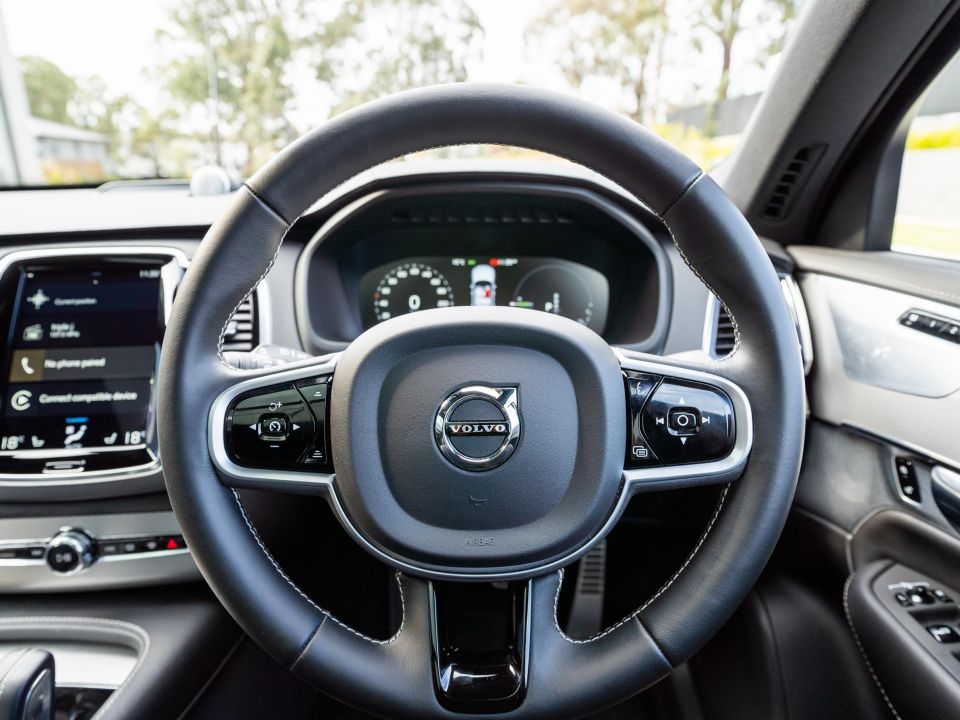
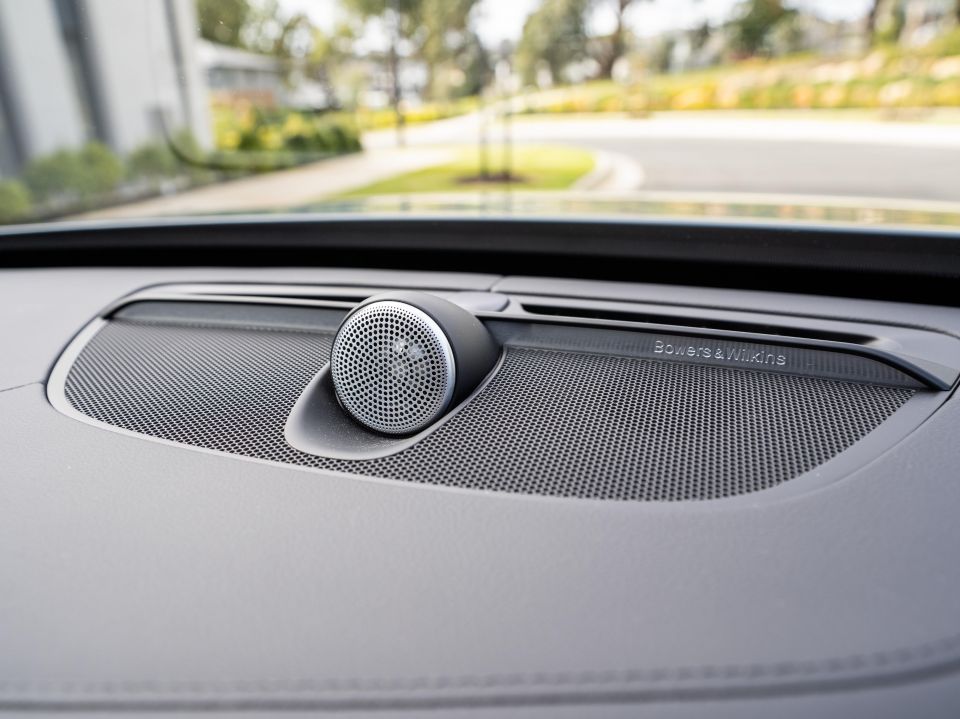
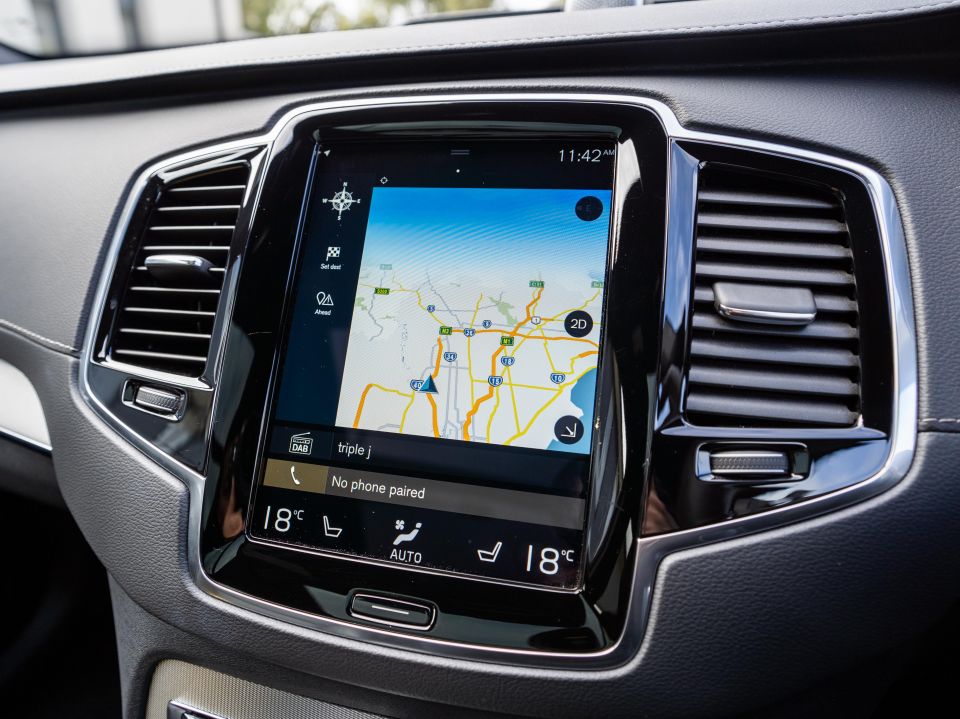
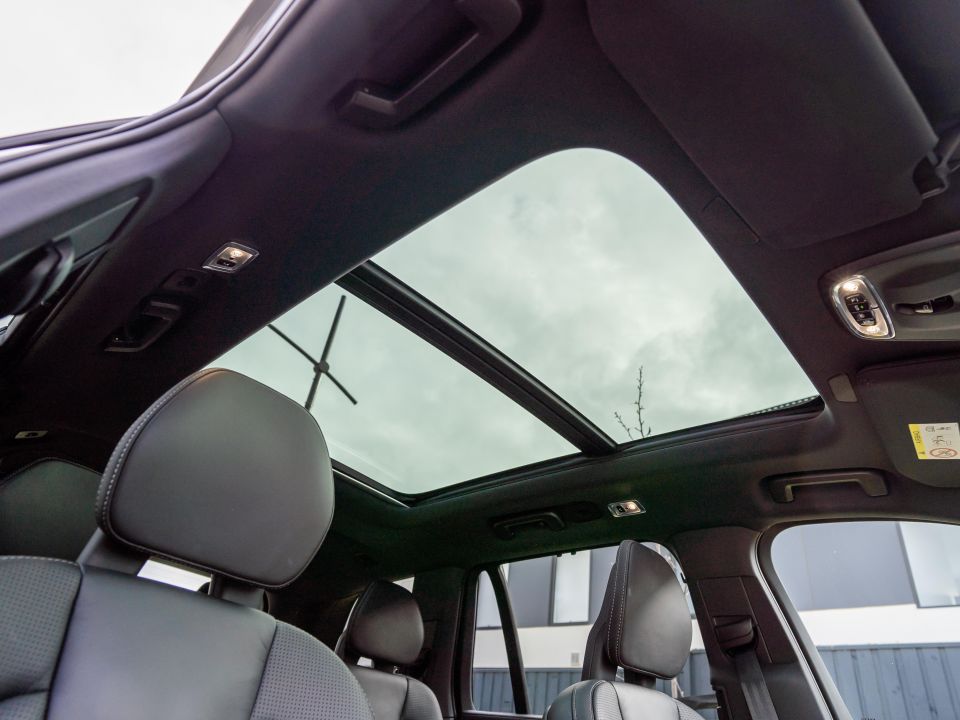
As the flagship variant of Volvo’s flagship model line, you get quite a lot.
Key specification highlights include:
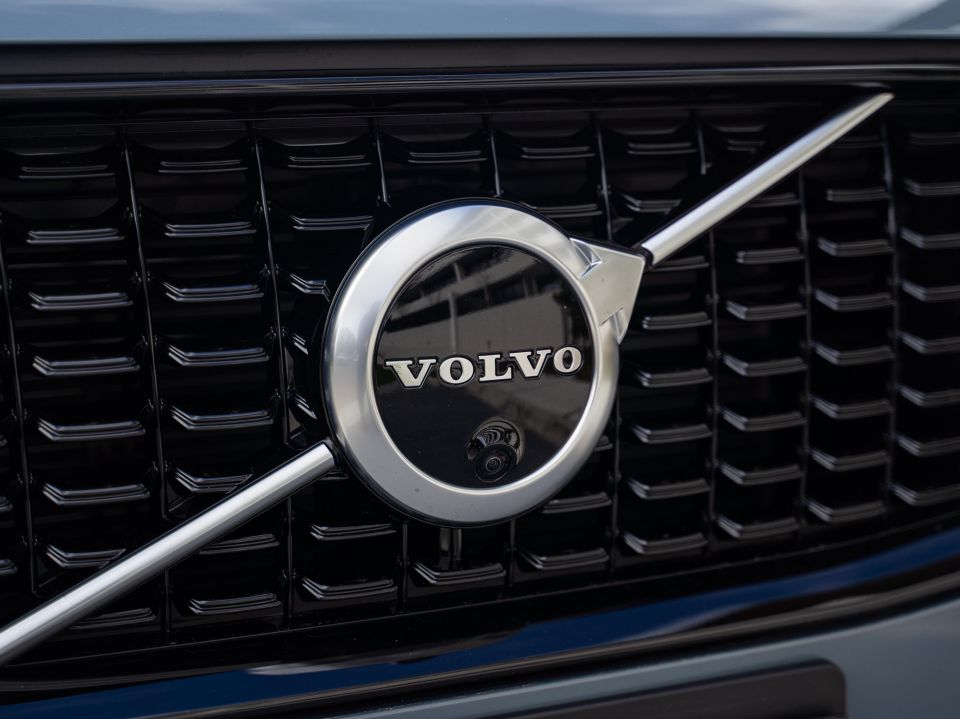
The following optional equipment was fitted to our test vehicle:
It’s worth noting our test vehicle is an 2021 build, with the following minor changes introduced for 2022 which should be hitting dealers shortly:
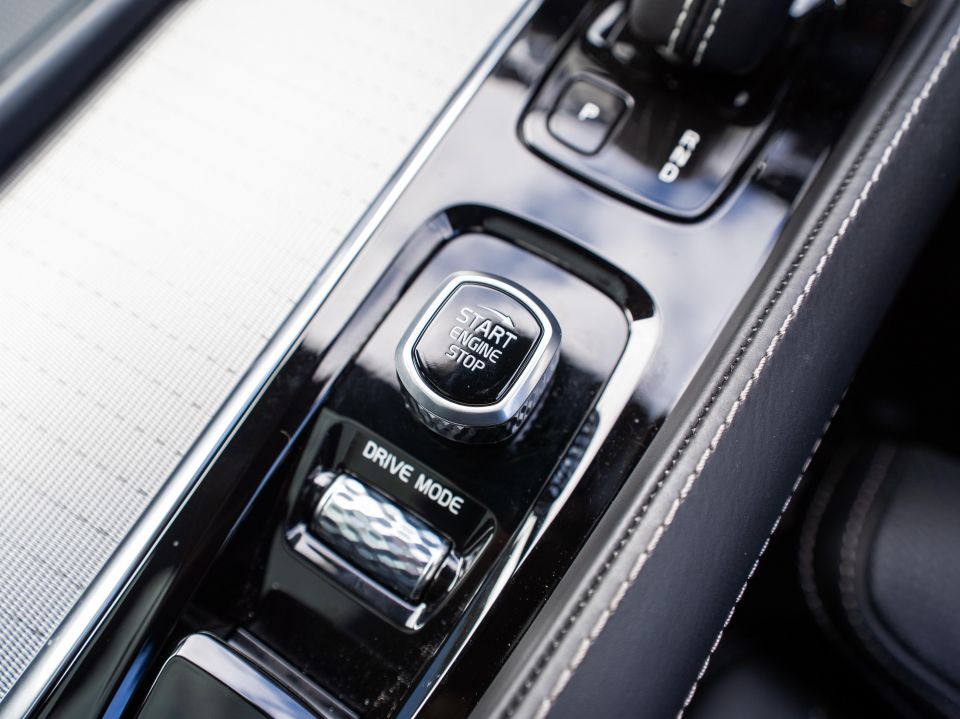
Even without options, the XC90 Recharge features a lot of equipment as standard that most rivals require additional spending for.
For example, a 20-speaker Bowers and Wilkins sound system will cost you $9700 on the X5 xDrive45e, while smoother ‘Merino’ leather that’s a similar grade to Nappa will set you back between $4400 and $8500 in the Bimmer depending on how much you want of the cabin to be leather-lined.
The Range Rover Sport PHEV requires between $20,000 and $30,000 in options to pack equivalent specification to the Volvo. Matrix LED headlights add $2400 to the top-spec seven-seat Audi Q7 55 TFSI, while the equivalent AMG Sport Package (as opposed to R-Design) on the Mercedes-Benz GLE450 costs a whole $13,000 which includes a number of features standard on the XC90 Recharge.
Even the Volkswagen Touareg 210TDI R-Line needs a $6500 option package to get close to the Volvo’s specification, and a further $3000 for the panoramic sunroof which takes it beyond the XC90 Recharge’s starting price – and you can’t get it with three rows of seating.
Likewise the Genesis GV80, which needs the $10,000 Luxury Package to get items like a fully-digital instrument cluster, Nappa leather, heated/ventilated front and rear seats, Matrix LED headlights, four-zone climate control, a heated steering wheel and rear privacy glass. Again, this then eclipses the Volvo’s starting price.
So, while the Volvo’s six-figure price tag seems daunting for a non-German vehicle, it’s incredibly well-specced for the price.
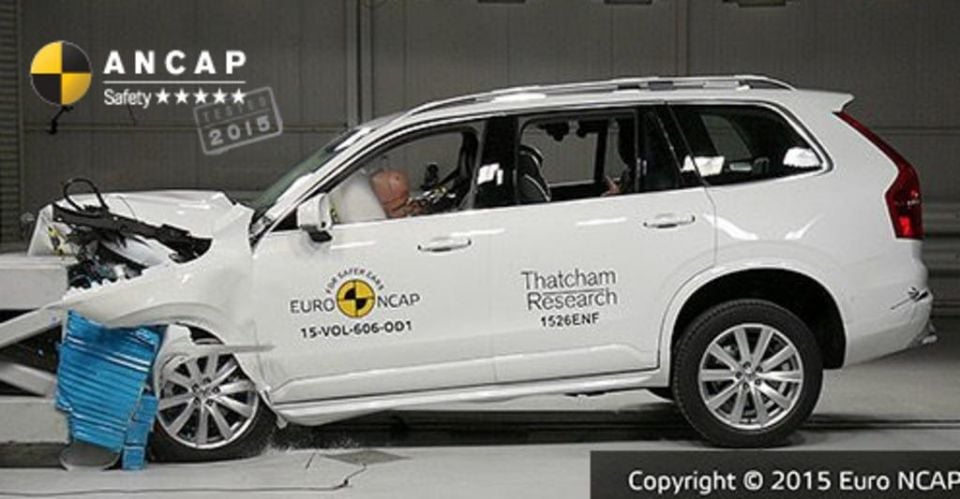
The Volvo XC90 has a five-star ANCAP safety rating, based on testing carried out by Euro NCAP in 2015, though this rating only applies to diesel models as it was a diesel variant tested by Euro NCAP.
It scored 97 per cent for adult occupant protection, 87 per cent for child occupant protection, 72 per cent for pedestrian protection, and 73 per cent for safety assist.
While an impressive set of results, the XC90 was tested against older, 2015 criteria.
Standard active safety equipment in Australia includes:
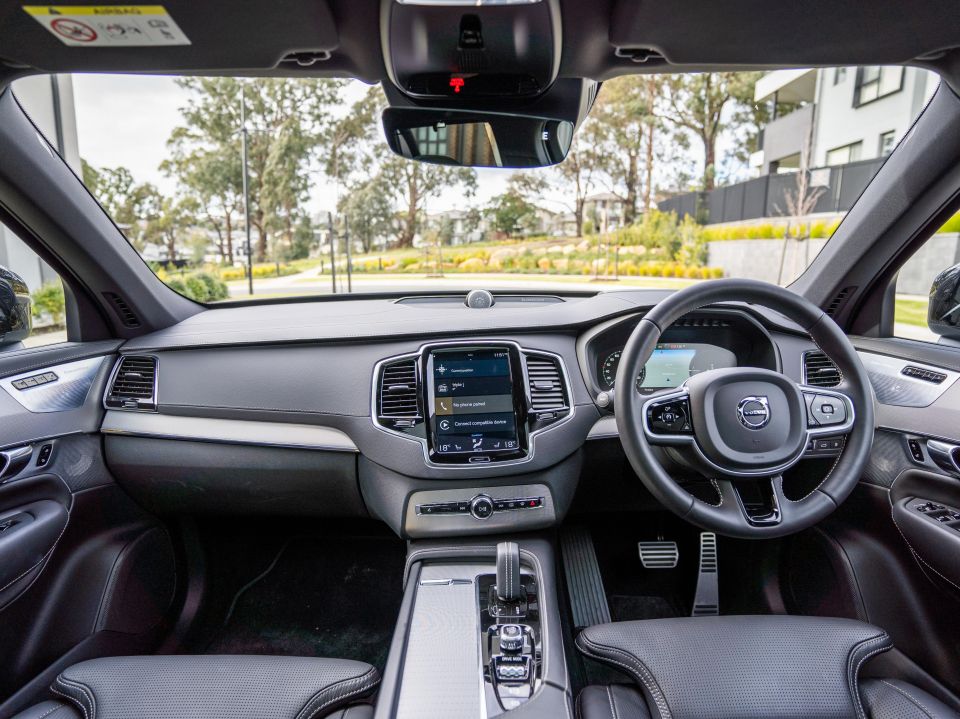
Not much has changed in here since the current XC90 first launched, which is testament to how well designed it was in the first place.
There is a real sense of quality and solidity in the cabin from the moment you hear the door ‘thud’ shut. It’s well finished, well designed, and it feels like it’ll stand the test of time – which screams Volvo to me.
From the huge range of front seat adjustment to the high-res infotainment and driver displays, to the soft-touch points littered throughout the cabin, the XC90 looks and feels like a luxury vehicle right out of the box.
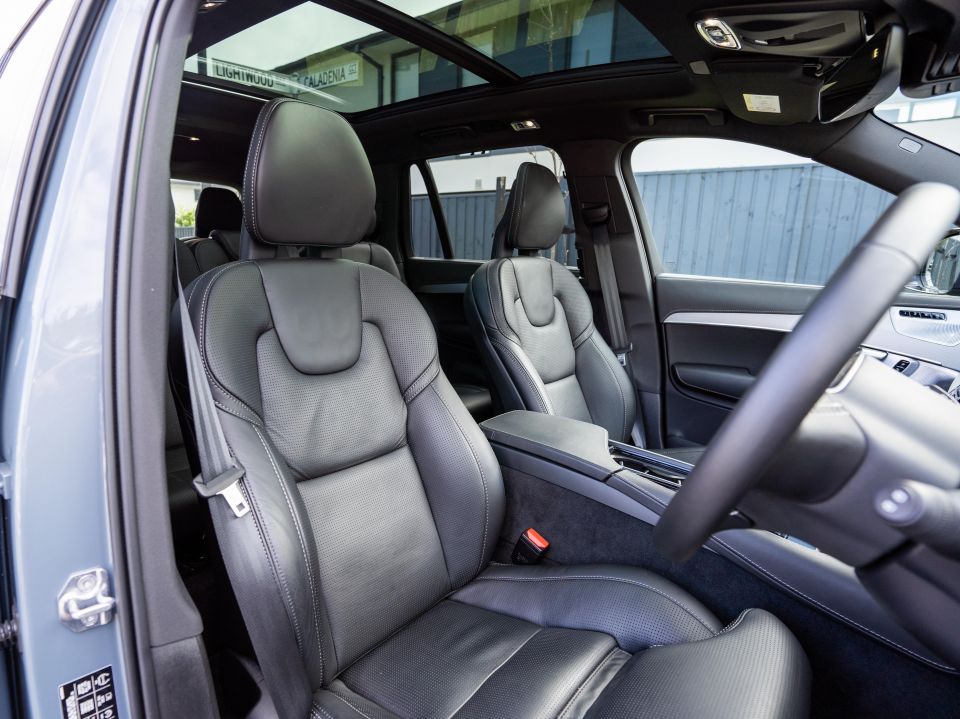
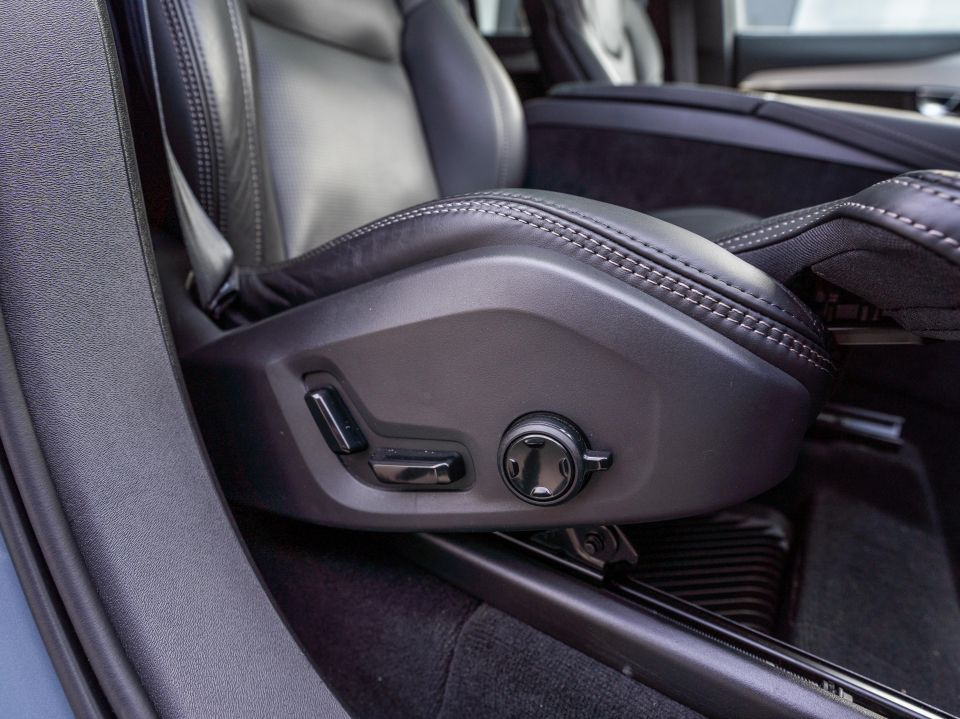
The seats are perforated and trimmed in nappa leather, the steering wheel is a nice size and shape, and is wrapped in supple, smooth leather. Even the metallic accents across the dash and on the speaker grilles look and feel like the real deal.
I’d opt for something other than a black interior for a bit of pop – thankfully there’s a beige option – but the darker finish makes sense for families with young kids prone to spilling juice boxes and colouring in things they shouldn’t.
While I’ve praised the aesthetic of the displays in the XC90, the size and interface is probably what ages the car the most in the cabin.
The menus and user experience are all still quite agreeable in 2021, though far from class-leading when you have the excellent MBUX and BMW OS7.0 systems on the market.
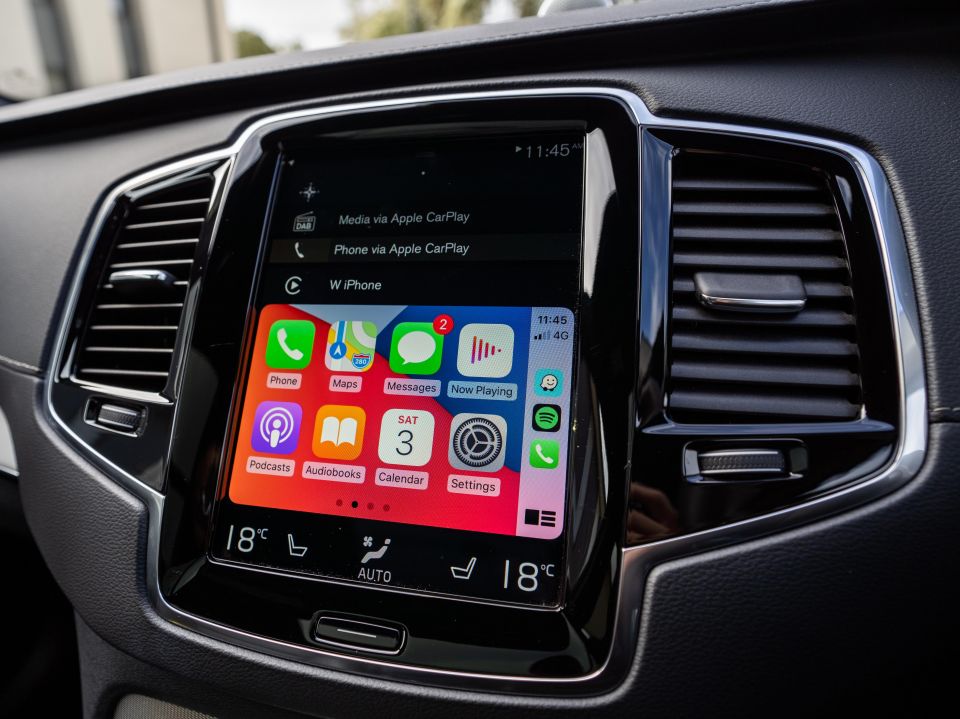
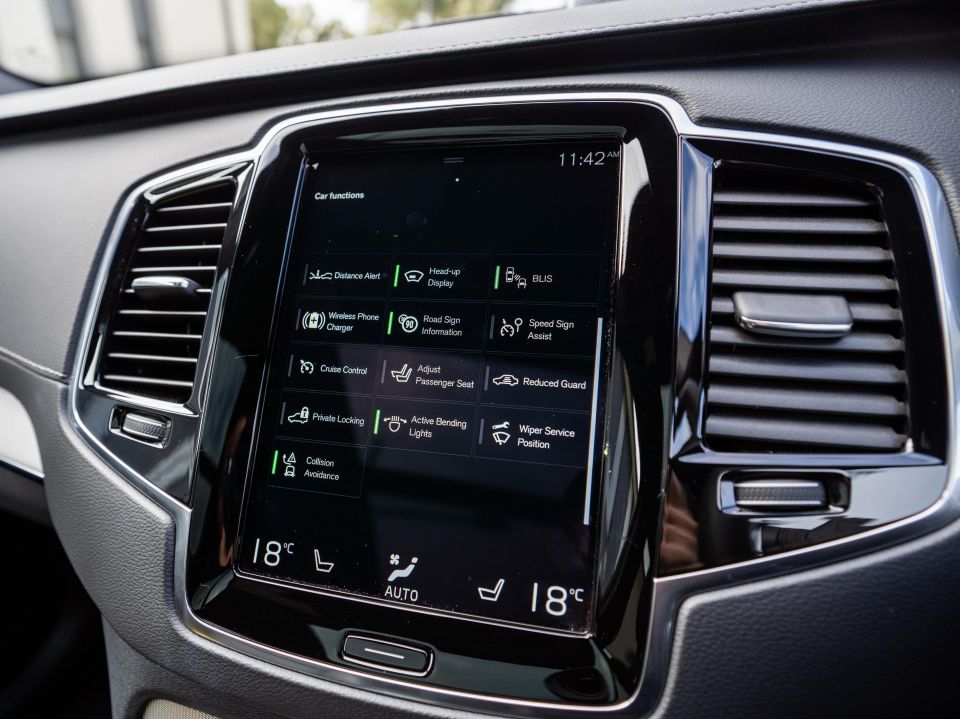
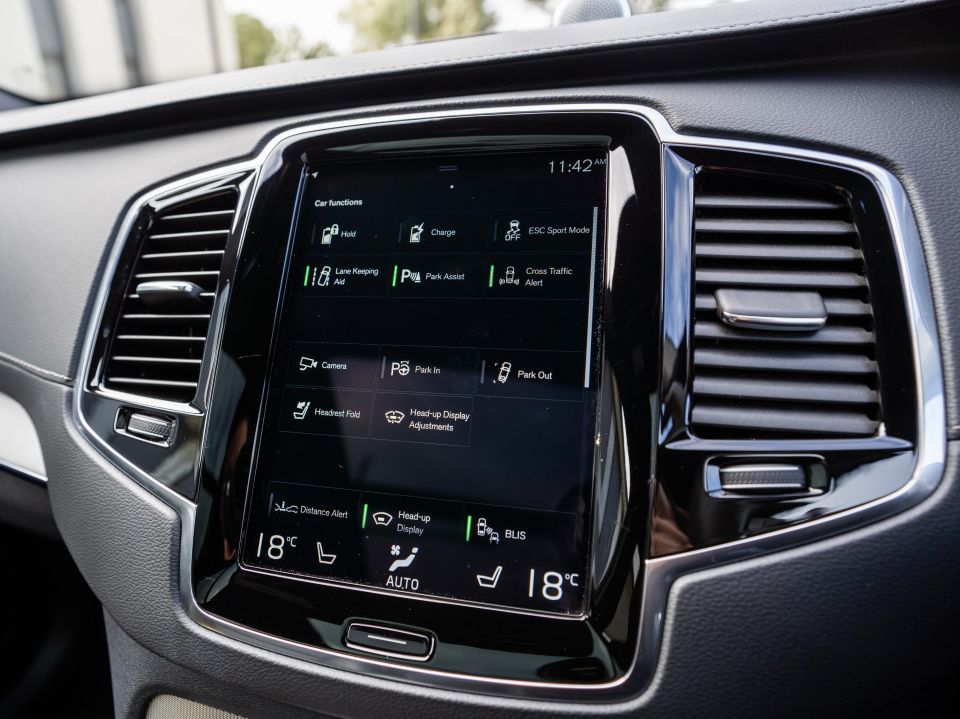
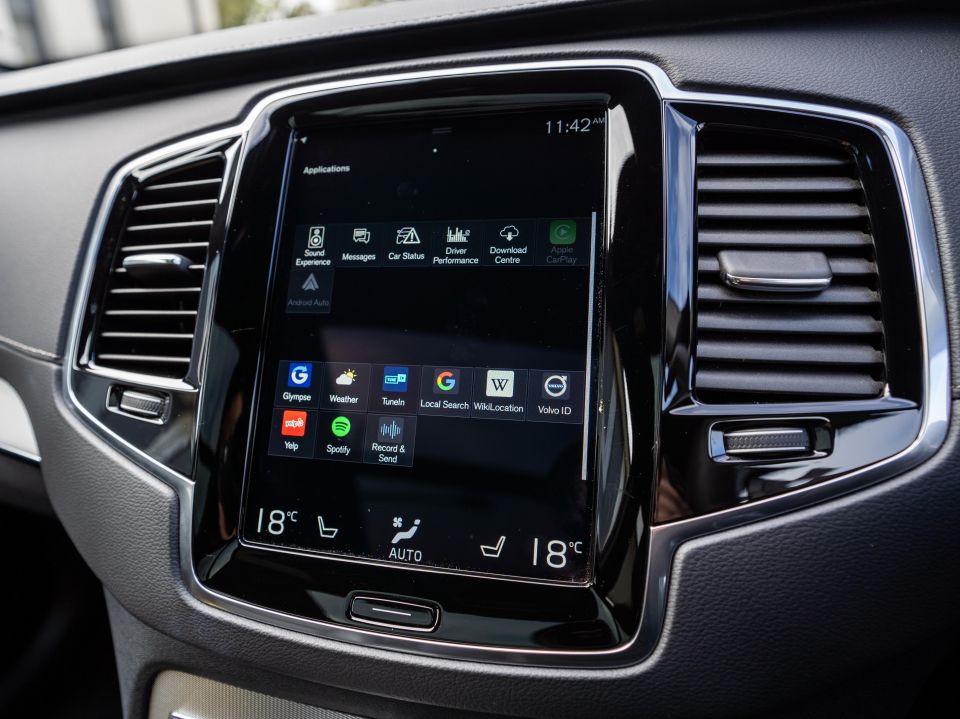
Further, it takes some time figuring out where everything is. The button to turn on the wireless phone charger, for example, is buried in a menu accessed by swiping left on the home screen. Ditto the modes for the hybrid drivetrain.
Once you know where everything is it’s quite easy to navigate, but it may require a bit of digging if you’re new to the brand. Response times are pretty good, and as noted earlier the infotainment system responses to swipe and pinch gestures like a smartphone – it’s almost like a 9.0-inch tablet.
The ‘Sensus Connect’ system will, however, be superseded very quite soon by the new Android Automotive interface being slowly rolled out across the range – starting with the facelifted XC60 in the coming months.
We absolutely loved the 19-speaker Bowers and Wilkins sounds system, which offers clear, deep sound. Pop it in the Gothenburg Concert Hall setting and the XC90 offers a surround sound experience worthy of a theatre.
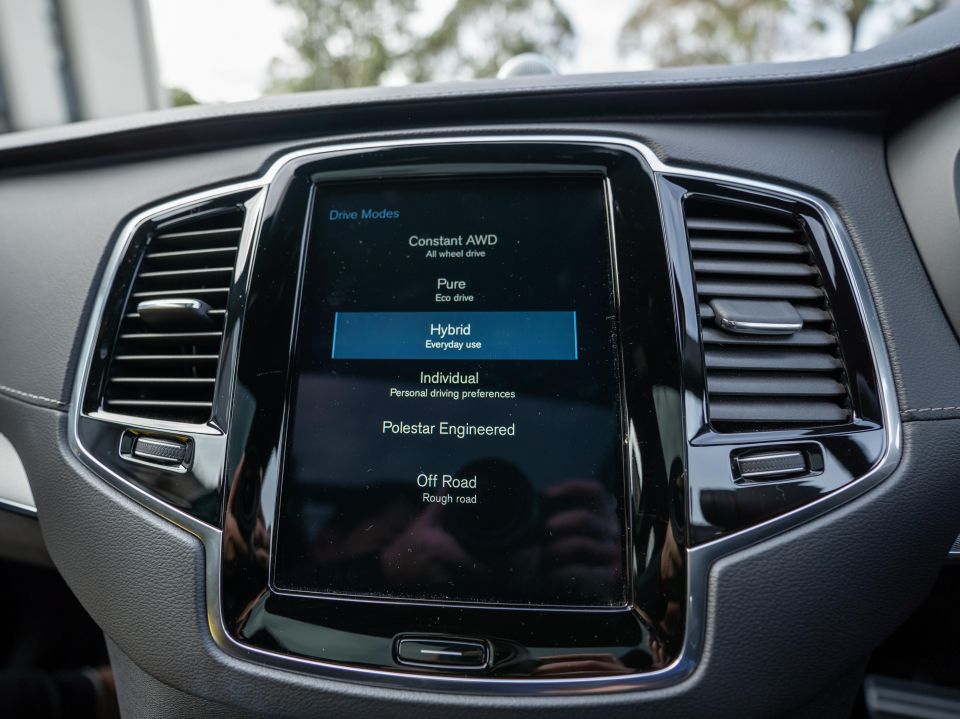
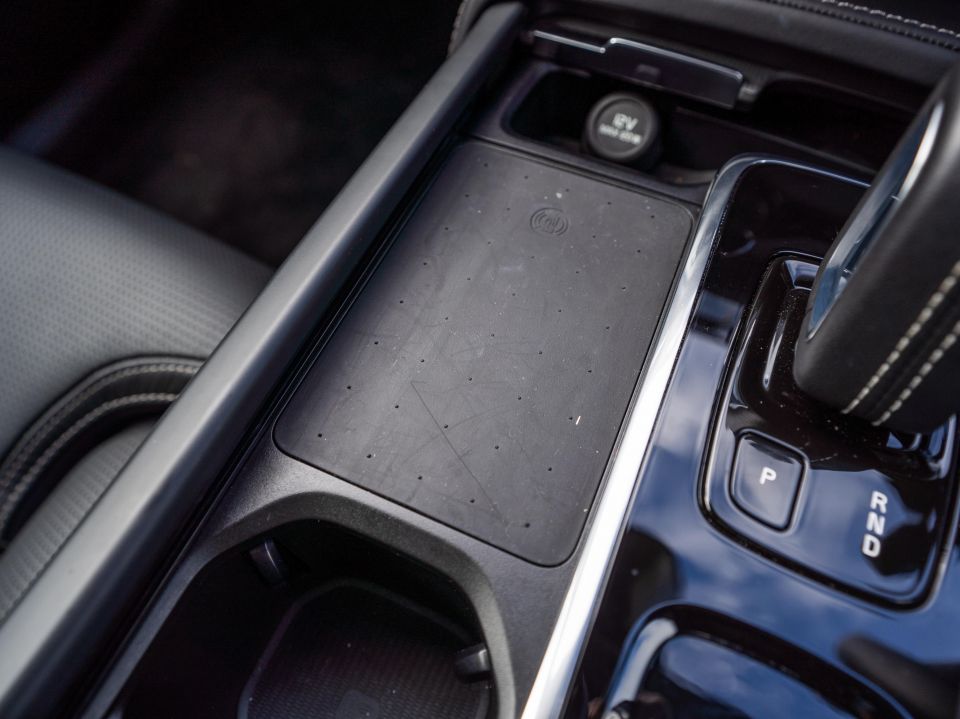
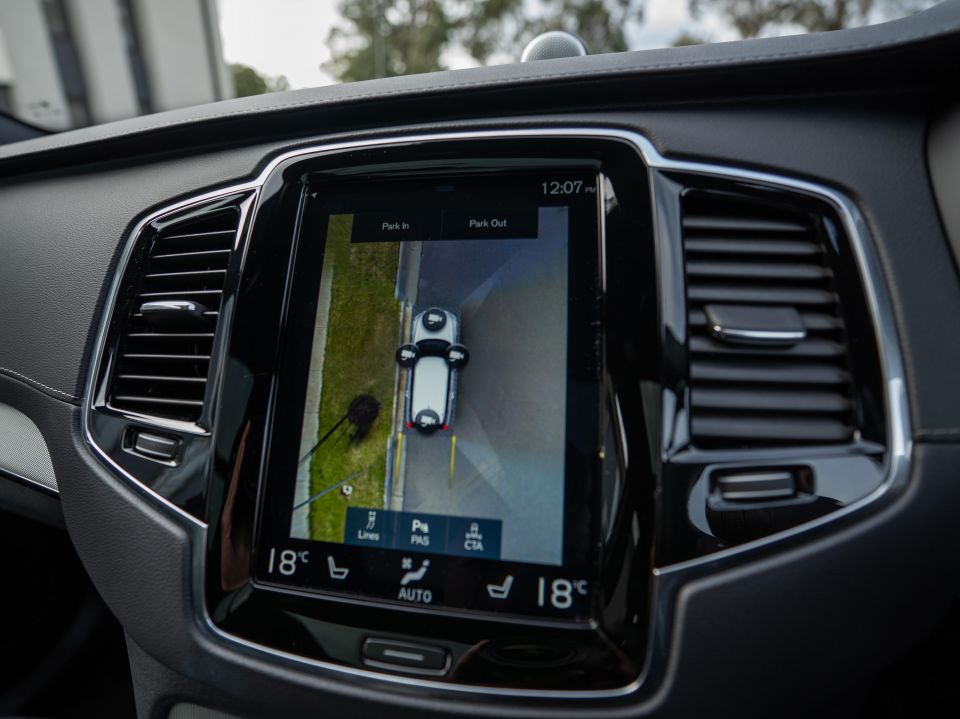
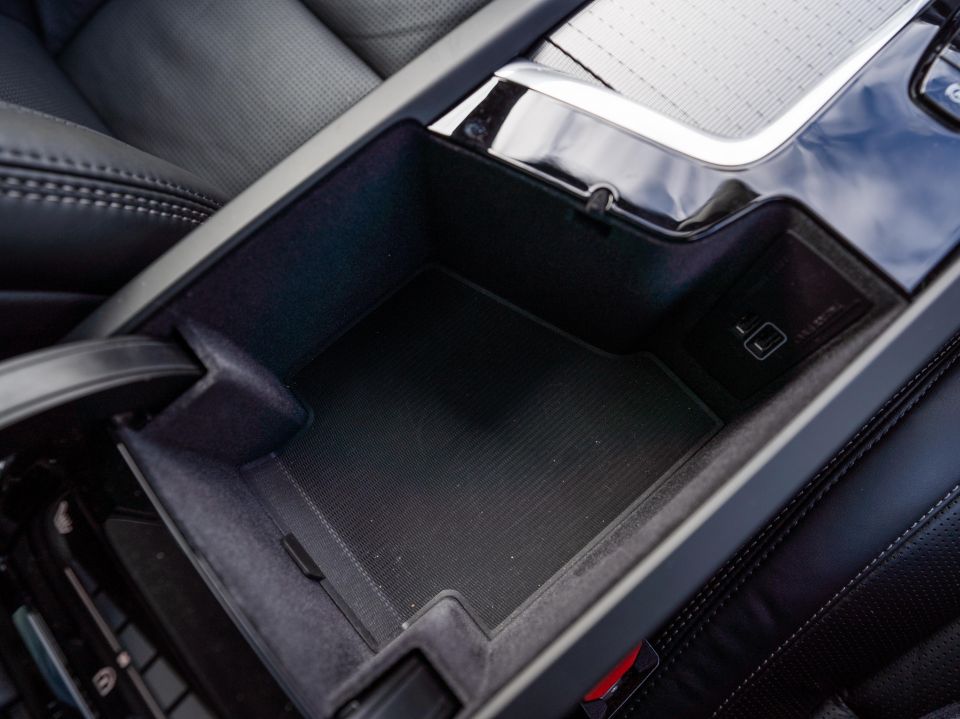
Our tester featured the optional heated/ventilated front pews with massaging function, and all three came in handy during our time given Melbourne’s unpredictable weather.
There’s also good storage up front, although it’s a little quirky in execution. The door bins are large with bottle holders, the cupholders in the centre console are likewise large enough, as is the cubby under the centre armrest.
Using wired Apple CarPlay, though, means an awkward placement of the phone atop the wireless charge with the wire hanging over the cupholders or storing it under the armrest.
I like the classy leather shift-by-wire selector, and the starter switch is a unique touch. The only thing I really struggled with was how to reset and toggle the main trip computer – the button is at the end of the indicator stalk.
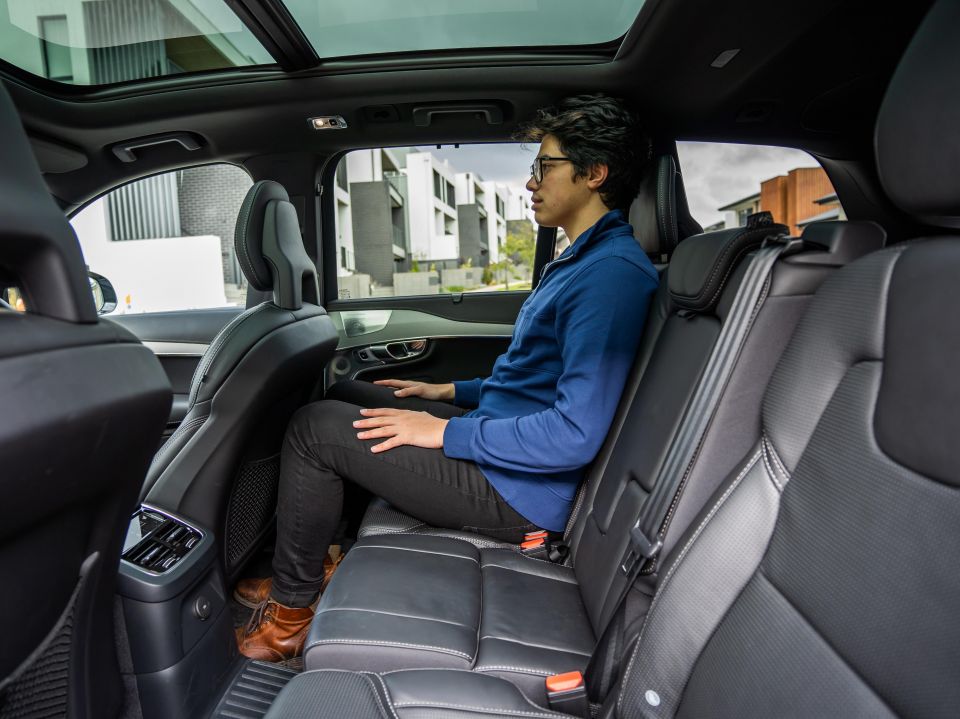
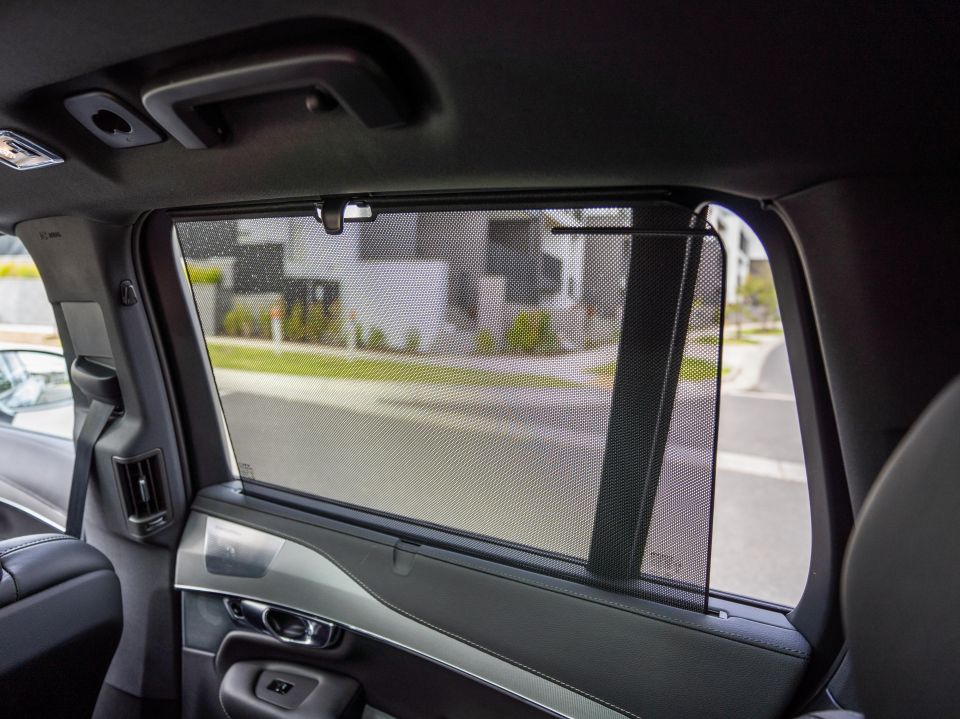
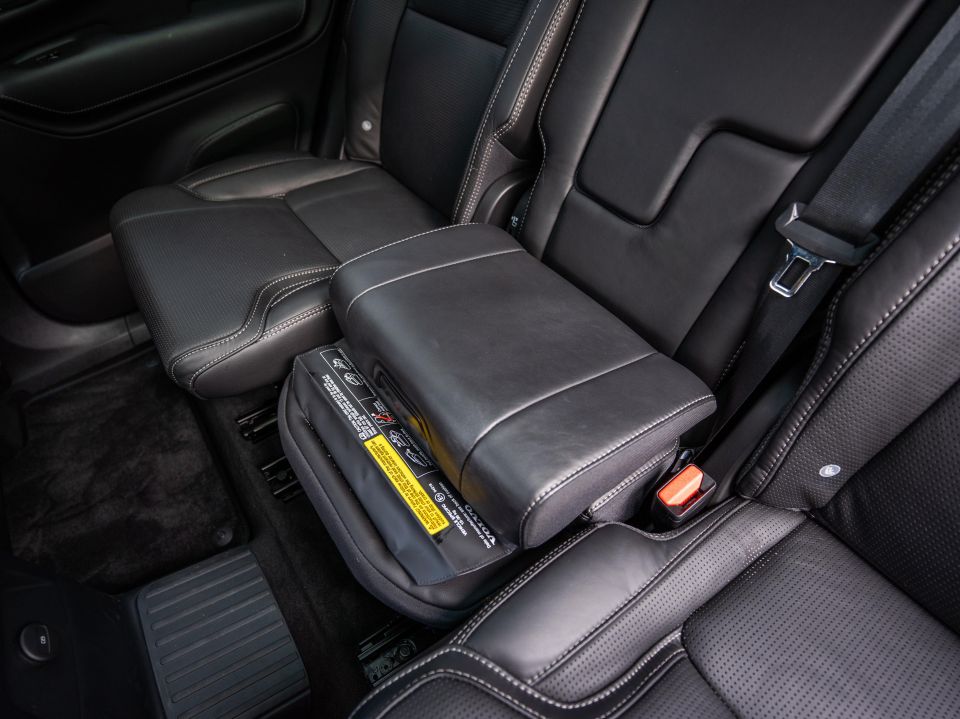
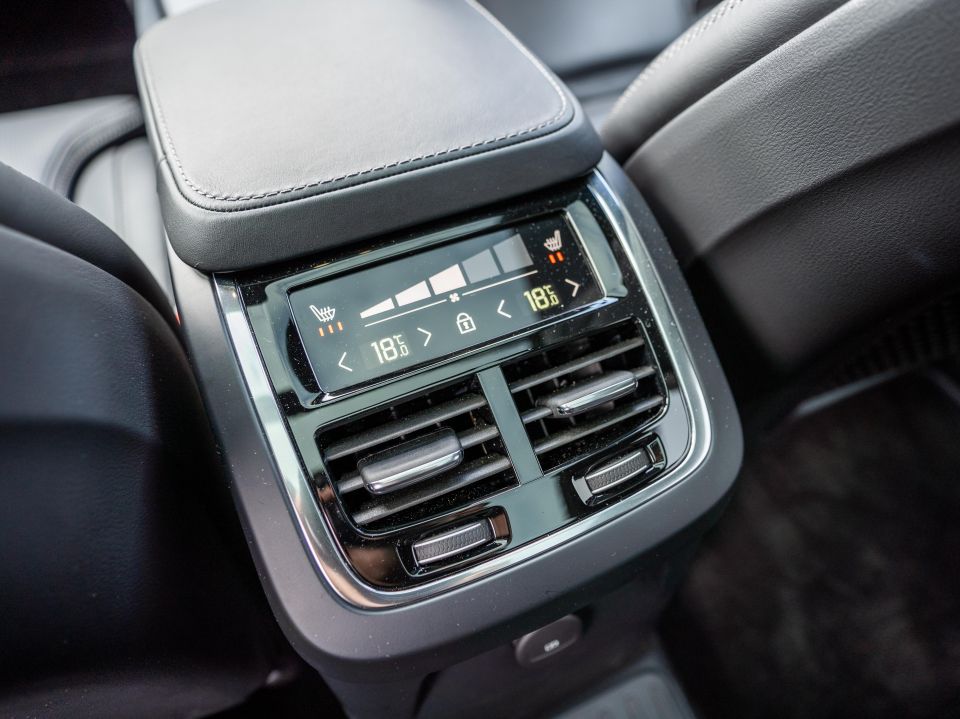
Moving to the second row, space is pretty good for two adults, three at a pinch given the three individual rear seats. The centre seat has Volvo’s funky built-in booster seat function, too, if your young one feels like they’re ‘too old’ for a car seat.
Each seat slides and reclines individually, and the outboard positions add heating as well. There’s a third zone of climate controls for the rear two rows with vents right through the cabin.
If you have the XC90 in five-seat configuration with the seats slid all the way back, leg- and headroom is very good minus the hump in the centre, though it’s rubberised to avoid scuffs and damage, and the footwells are large enough on either side to share with the person next to you should you get the centre seat.
Even with the panoramic sunroof, headroom is impressive. It all bodes well for a vehicle designed to transport growing families in comfort.
Rear passengers score manual sunblinds for the windows, a fold-down centre armrest on the centre seat, airline-style fold-out map pockets behind both rear seats, bottle holders in the doors, and a USB charge port.
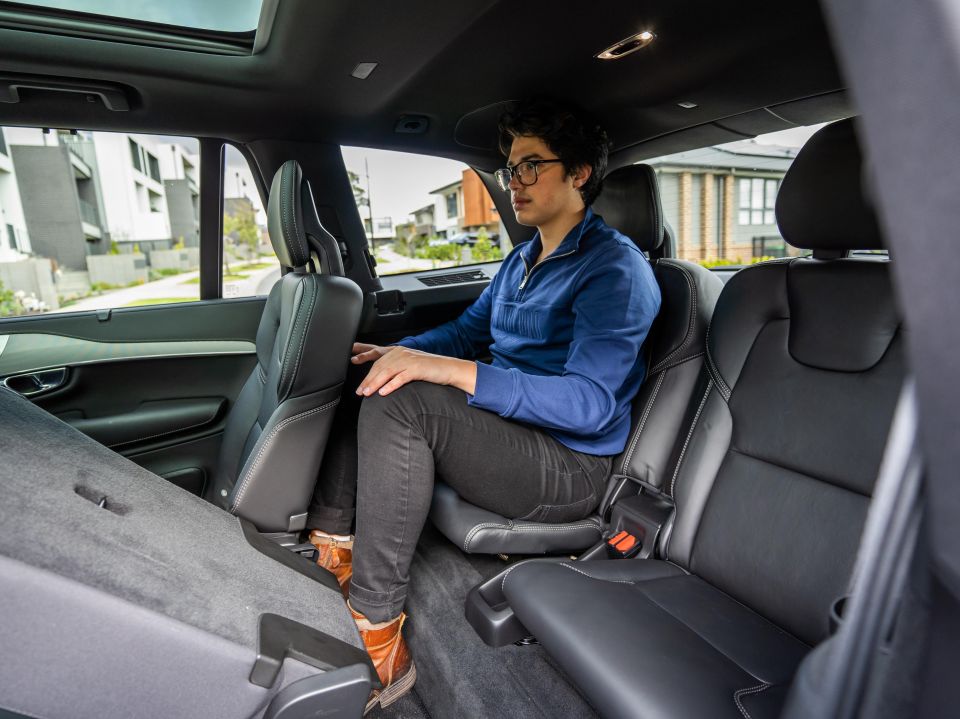
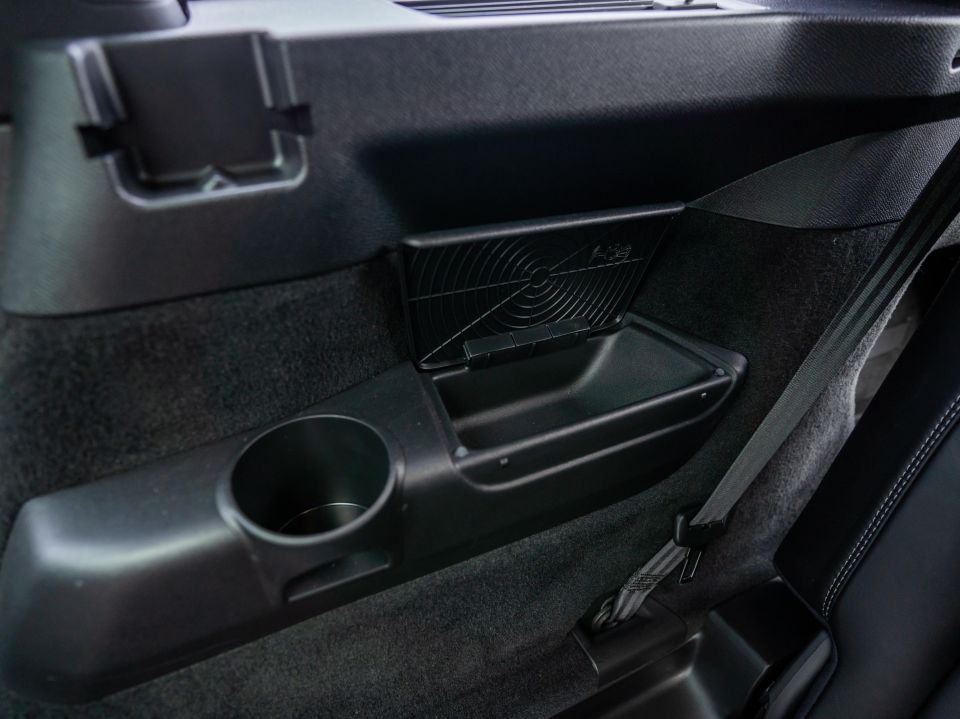
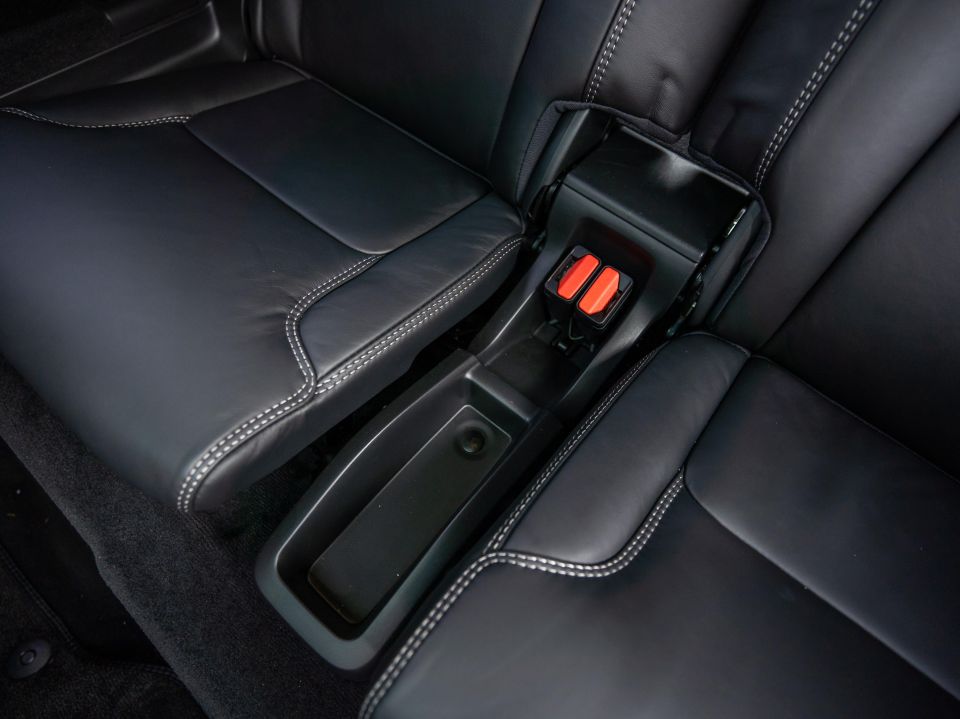
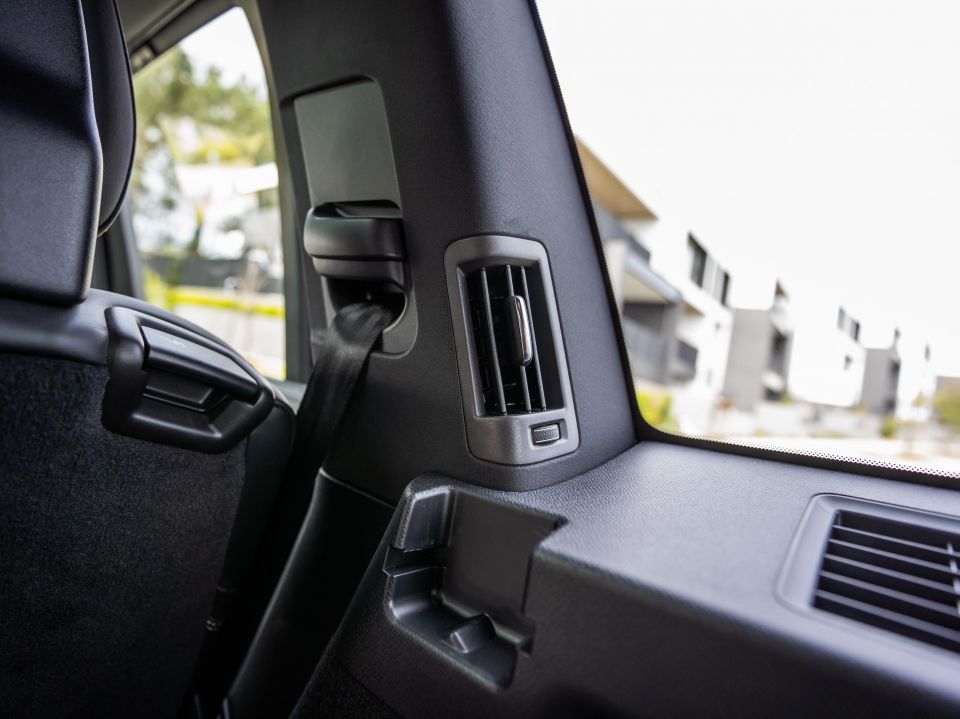
In the third row the XC90 is above average for kids and adults under six-feet tall, but if you’re a little taller like me, you might be a little squished.
At just over 6’1 my head was brushing the roof, though the raised seat position and adequate knee and toe room lead me to believe I could do a short to medium trip in the back in reasonable comfort.
Volvo says the XC90 is a proper seven seater rather than a 5+2, and it’s as good as it’s going to get this side of a BMW X7 or Mercedes-Benz GLS – certainly a step up from the Audi Q7 and Mercedes-Benz GLE.
You can see why the nameplate has been so popular with Australian families thanks to its usable three rows.
There’s also face-level air vents, cup holders and storage cubbies with a cute little spider graphic under the lid. Having a theatre-style layout ensures good visibility even in the third row, both forward and out the sides. Having large windows for the rearmost occupants is a good addition as well, in an age of sweeping roofs and rising beltlines.
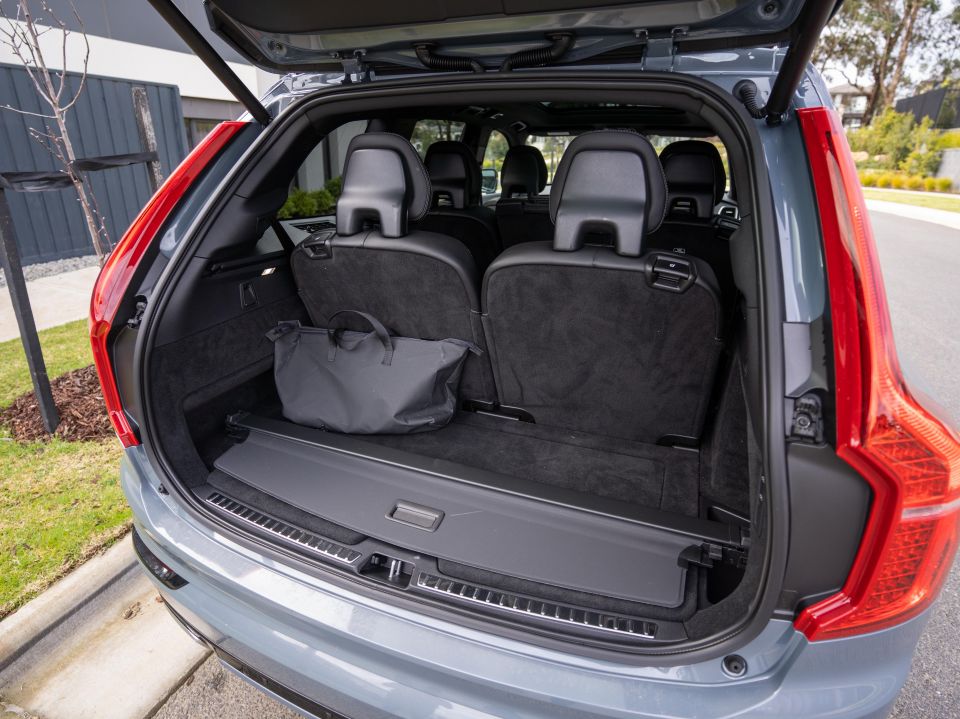
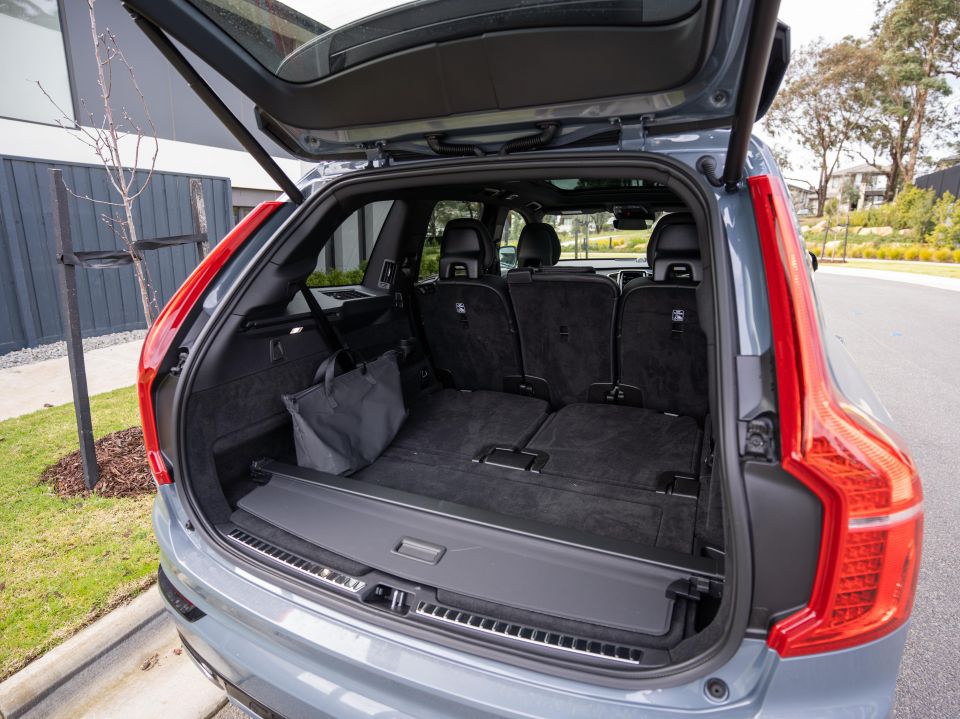
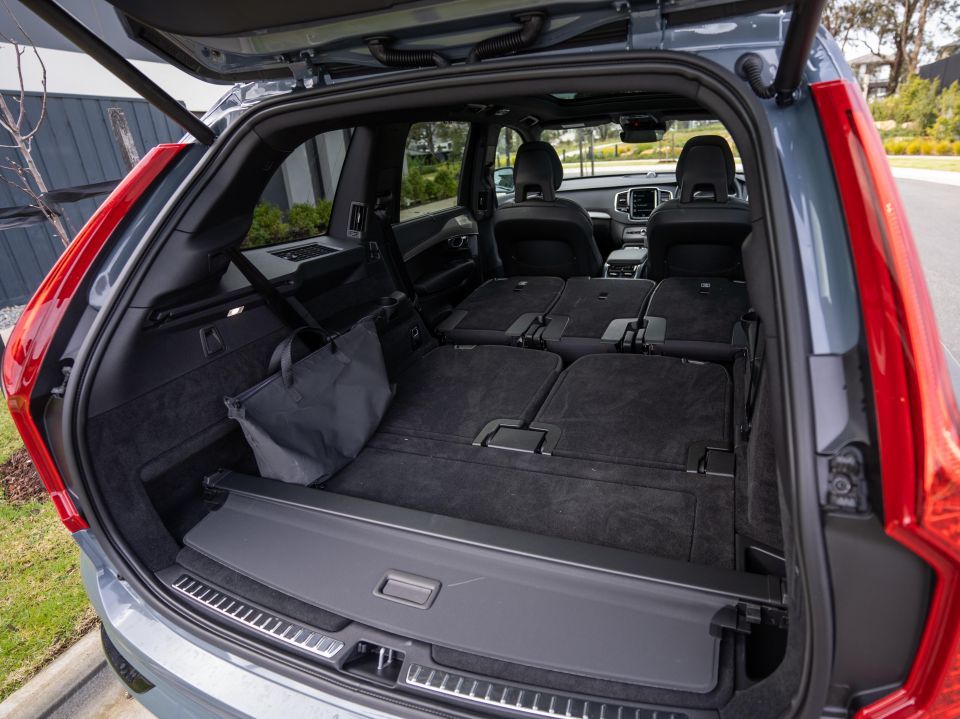
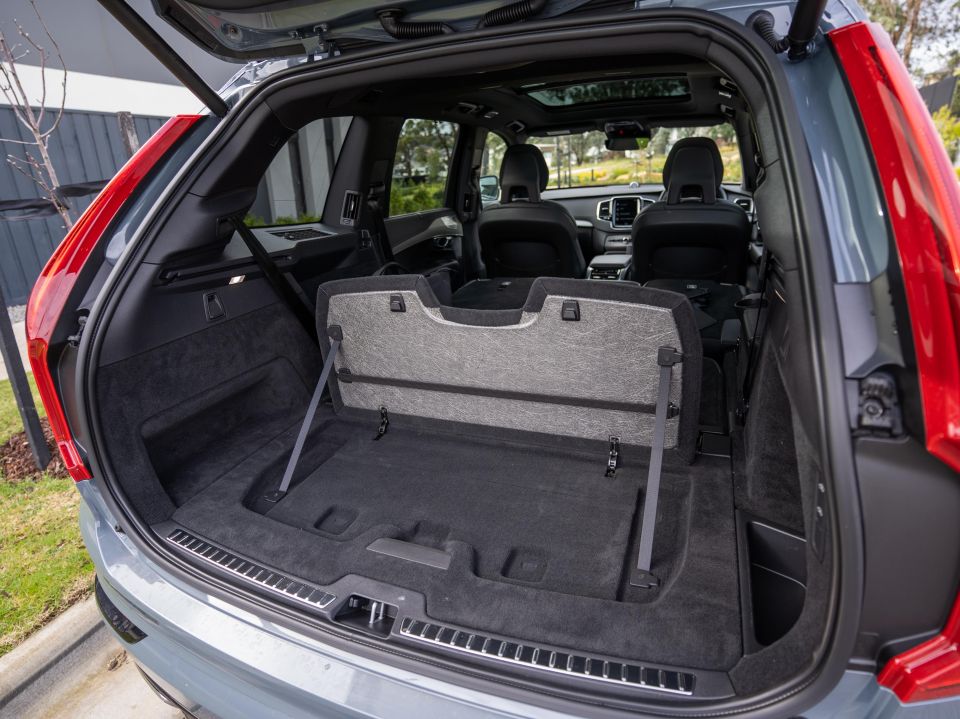
The boot is massive, but knowing just how massive requires a bit of research.
Volvo Cars Australia doesn’t list boot capacity on its public website for some reason, but we found the figures for UK models, which should be consistent with local specifications.
With the third row in play, there’s a decent 356L – around the same as a Volkswagen Polo. In five-seat configuration, there’s a huge 1007 litres on offer. With the second and third rows folded flat, you have 1856L.
Volvo has kept clever touches in the boot, like a built-in floor partition to stop items from moving about, and a shallow under-floor storage area. Recharge PHEV models get a bag to store the charge cable, too.
There’s also switches to raise and lower the rear suspension height courtesy of the standard air suspension.
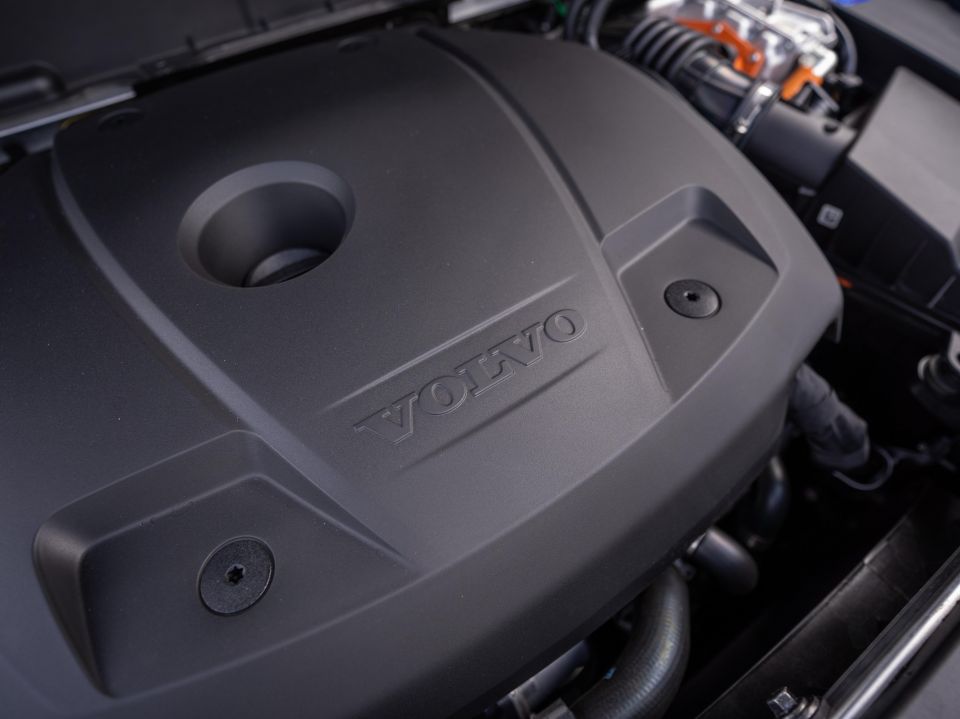
Where expert car reviews meet expert car buying – CarExpert gives you trusted advice, personalised service and real savings on your next new car.
The plug-in hybrid system pairs the B6’s 2.0-litre twin-charged petrol engine – that’s turbocharged and supercharged – with an electric motor and 11.6kWh lithium-ion battery pack.
It’s an e-AWD system, too, meaning the petrol engine only drives the front axle and the e-motor drives the rear. An eight-speed automatic transmission is standard, sans the paddle shifters offered with other engine variants.
System outputs aren’t quoted as standalone figures, but Volvo lists power as 246kW + 65kW (petrol + electric), while torque is 440Nm + 240Nm.
Peak power comes on tap at 6000rpm for the petrol engine, and 7000rpm for the e-motor. Meanwhile, the electric motor develops 240Nm between 0 and 3000rpm and the petrol engine makes its max shove between 2200 and 4500rpm.
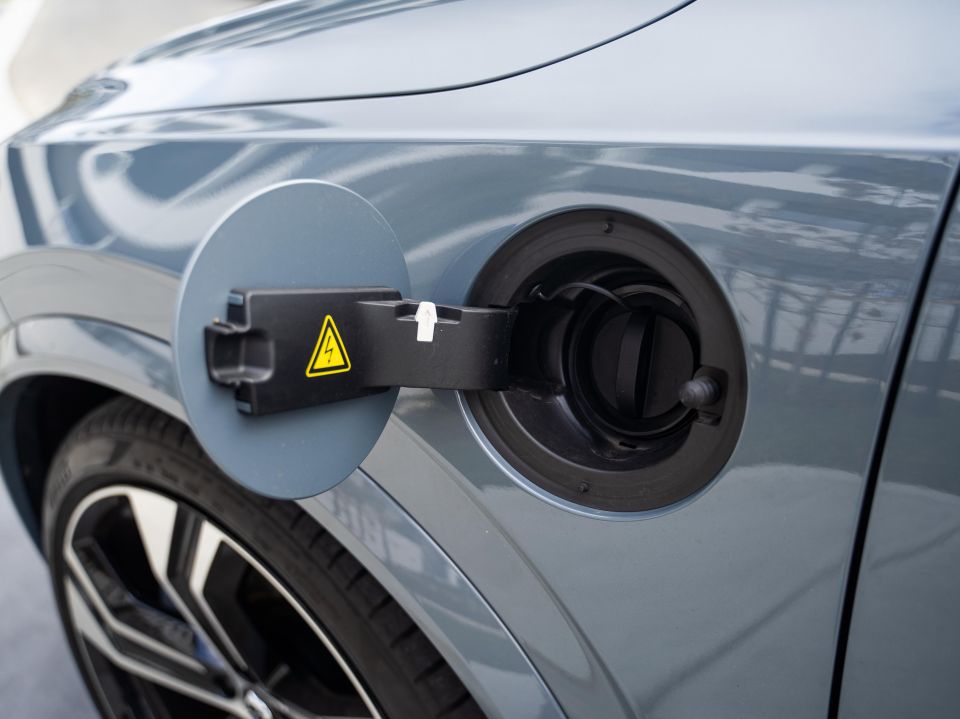
Volvo claims the plug-in XC90 can dash from 0-100 in 5.5 seconds –not bad when you consider its 2315kg tare weight. Fuel use, meanwhile, is quoted at 2.1L/100km on the combined cycle and the fuel tank measures 70 litres.
The XC90 has an inbuilt Type 2 charge port and comes with a charge cable with adaptor to fit in a three-point Australian household socket.
Using a conventional house socket, the XC90 will charge in about 4.0 hours (10A, 240V, 2.4kW), and if you install the available Wallbox you’ll reduce that to around 3.0 hours charging at the advertised 3.5kW.
Volvo Cars Australia claims an electric range of up to 44km (ADR 81/02), though as I’ll get to in the driving section, you can expect closer to 35-40km in real-world conditions.
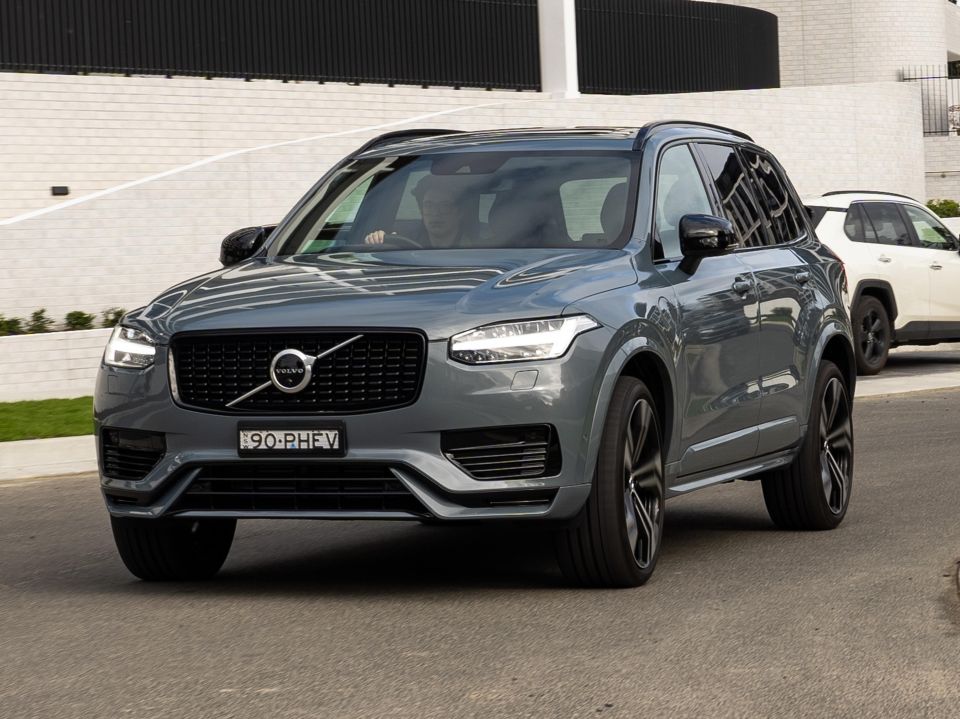
First things first – this is my first plug-in review of any kind, and my first time with a Volvo XC90.
I wanted to use this opportunity to learn the ins and outs of plug-in vehicle ownership, and do my best to use it as intended. What does that mean? Do the bulk of my daily commuting on electric power and charging the XC90 at home whenever I could.
For most of the week I’d start the day with the Volvo fully charged, and leave it in its Hybrid setting which let the vehicle determine the best balance between efficiency and performance.
The week I had the XC90 Melbourne had a bout of very cold weather, some mornings showing between 0 and 4 degrees in the instrument cluster. PHEV and EV batteries tend to offer less range in cold weather.
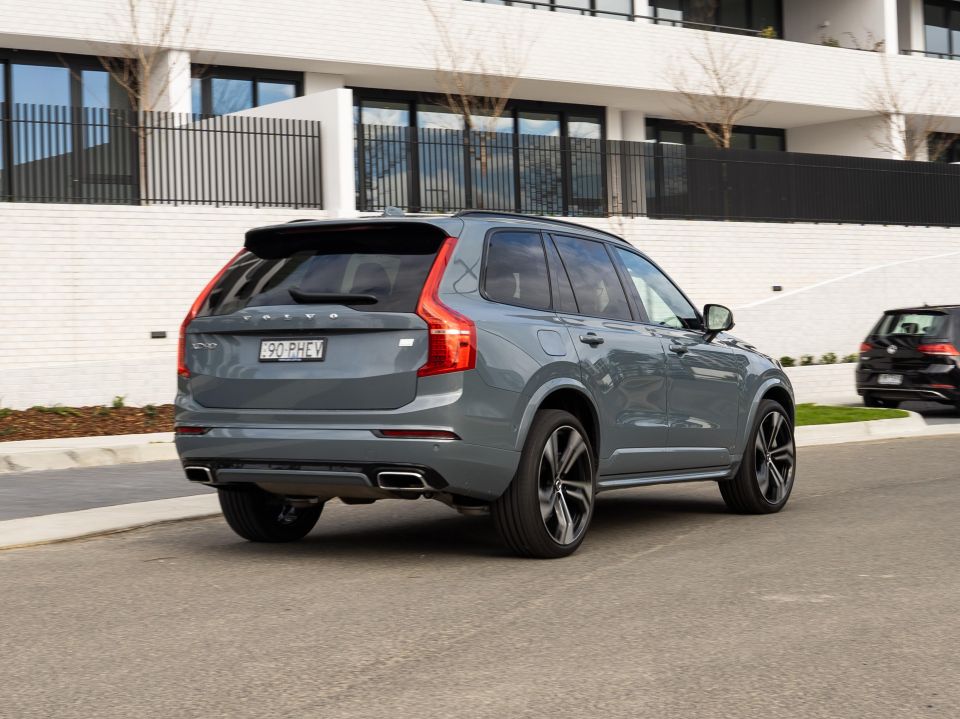
Every morning the XC90 Recharge would show 35km of EV range when fully charged and in Hybrid mode. Flick it into Pure, which prioritises EV driving and maximises range, would show 40 kilometres.
My commute to work is around 23 kilometres each way, starting from Doncaster in Melbourne’s east heading to the CarExpert office in Southbank near the CBD.
The route offers a mix of suburban, freeway and inner-city roads, with varying levels of traffic depending on the day. You can also factor in temperamental weather.
I made it to the office every day barely using any fuel or requiring the petrol engine at all, and getting a third of the way home before the battery would run out of charge.
So, I’d consistently see the average fuel consumption readout in the trip computer showing a figure starting with a 1 or a 2, not bad given the official claim of 2.1L/100km.
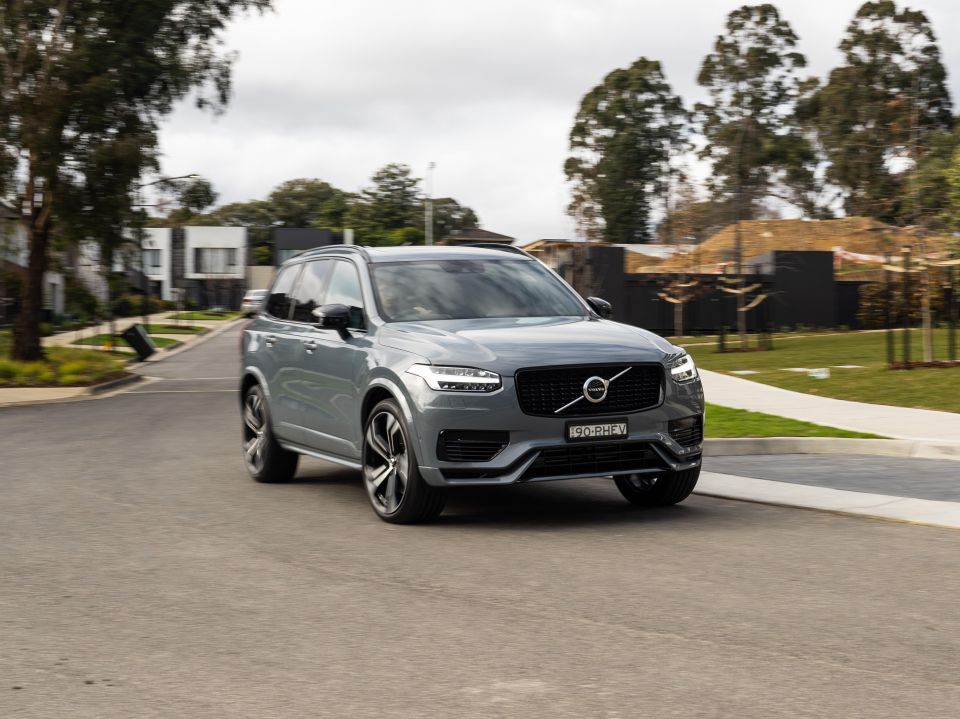
Regardless of drivetrain mode chosen, the Volvo XC90 remains a comfortable, refined and secure vehicle to spend time in. There’s little in the way of road and wind noise, even with the ridiculous 22-inch wheels fitted here, and there’s a feeling of solidity whether you’re putting around town or touring on the freeway.
The standard air suspension in the XC90 Recharge also makes for a comfortable all-round ride, though those 22-inch wheels mean tram lines and smaller road imperfections around town are a bit more apparent.
In terms of handling there’s no disguising the XC90’s boxy, heavy form, but keep the R-Design package to the side and you have a family bus that handles with accuracy and confidence, without being athletic.
The big Volvo does feel like a large car but the trade-off is a feeling of security and confidence in all conditions. We were very impressed with how it doesn’t attempt to be a sports car in how it behaves on the road, unlike some rivals.
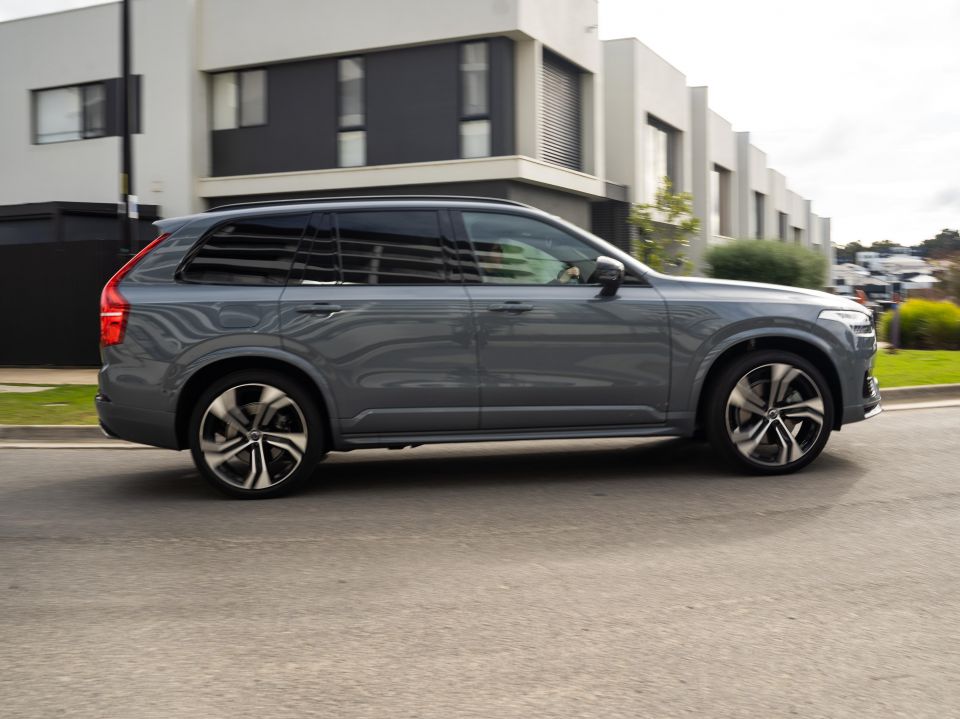
Performance is very strong as well. With a combined 680Nm between 2200 and 3000rpm with both ‘engines’ working in tandem and a theoretical 300kW at the upper end, the 2.3-tonne XC90 hustles along when you need it.
When in Pure (EV) mode, however, it’s not particularly quick and can feel like it’s struggling on steep hills. Polestar Engineered mode primes everything for max attack, and boy did I beat that Range Rover Sport from the on-ramp lights.
Further, the XC90’s array of safety systems and assists work well in real-world use. The standard Pilot Assist – which combines adaptive cruise and active lane centring functions – made lengthy highway stints a breeze, particularly on a trip to Phillip Island in Victoria’s south east.
While there’s excellent outward visibility thanks to the plentiful glasshouse, blind-spot monitoring and rear cross-traffic assist add an extra safety net for highway touring, making gaps in city traffic or backing out of a tight parking space.
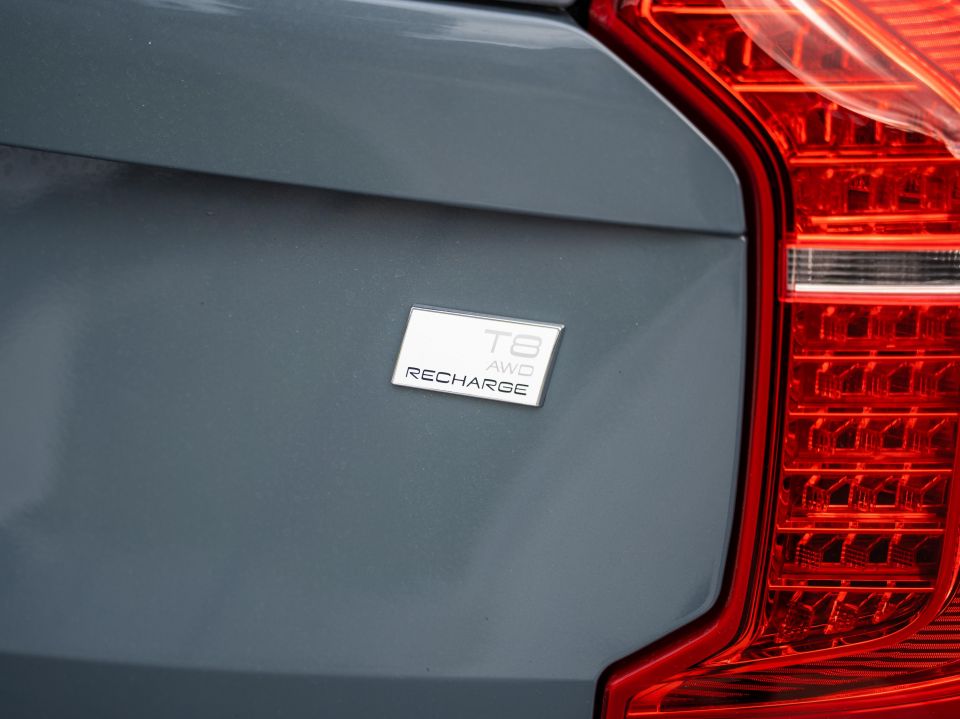
Volvo offers one of the longer warranties in the premium segments, with a five-year, unlimited-kilometre program incorporating roadside assistance for the same period.
Scheduled maintenance is required every 12 months or 15,000 kilometres – whichever comes first – and Volvo Cars Australia now offers competitive pre-paid service plans.
All models, including the XC90, are offered with three-year and five-year service plans priced at $1500 and $2500 respectively – averaging $500 per year.
In terms of real-world efficiency, we ended the week with an indicated figure of 6.2L/100km with 610 kilometres covered. There was an indicated 290km of range left from the petrol tank, too.
While the indicated figure was some three times higher than the advertised claim, my return trip to Wonthaggi was about 200km of highway driving with little electric-only driving, and on the way home I spent half an hour on the highway with the drivetrain set to ‘charge mode’ and replenished about 15km worth of battery charge from near zero.
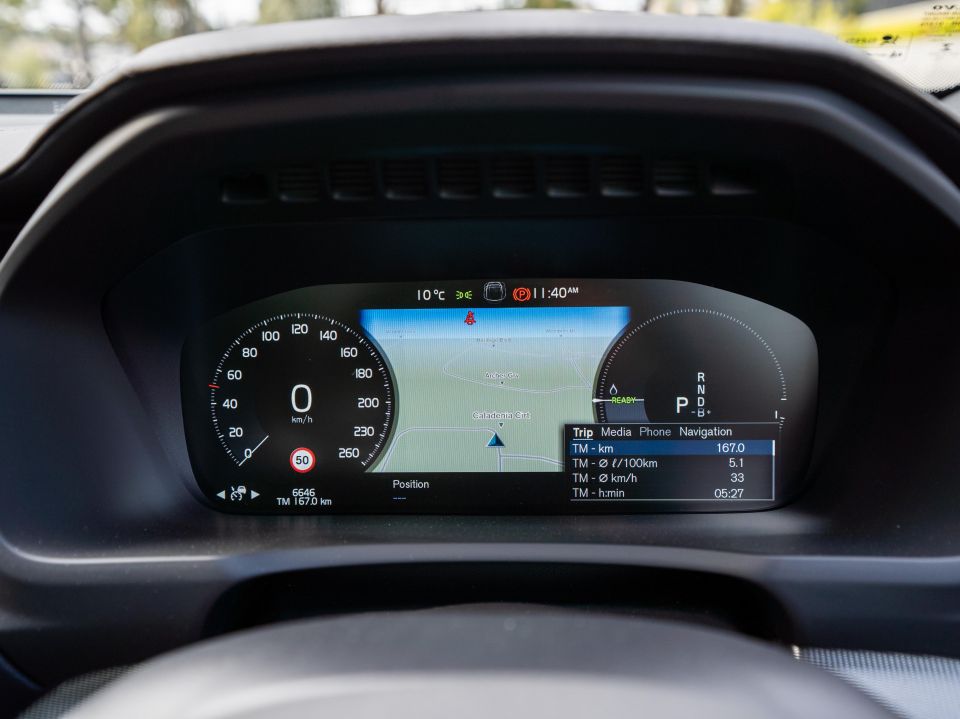
During the week with my daily commutes to and from work, the fuel consumption never went above 3.5L/100km and that’s even with the battery running out of juice before a circa-15km freeway stint on the way home. I could have easily gotten close to the official claim had I not done the extended roadtrip.
Given the urban focus and benefits from a PHEV that can essentially drive as an EV for daily commuting, it confirmed to me why I like the idea of a PHEV as the main vehicle in a household.
Even with a six-year-old drivetrain with range on the low side of the segment, the XC90 Recharge slashes urban fuel use and emissions. If you can charge it nightly and don’t cover more than 40-50km in a day, you’ll rarely visit a fuel station.
Plus, you can just use petrol for weekend road trips.
My lack of access to a home wall box meant my charging solution for the week was using a three-point socket running the cable from the garage.
The ‘time until fully charged’ readout on the dash usually was in line with Volvo’s 4.0-hour claim, and having it plugged in overnight always meant a full battery in the morning.
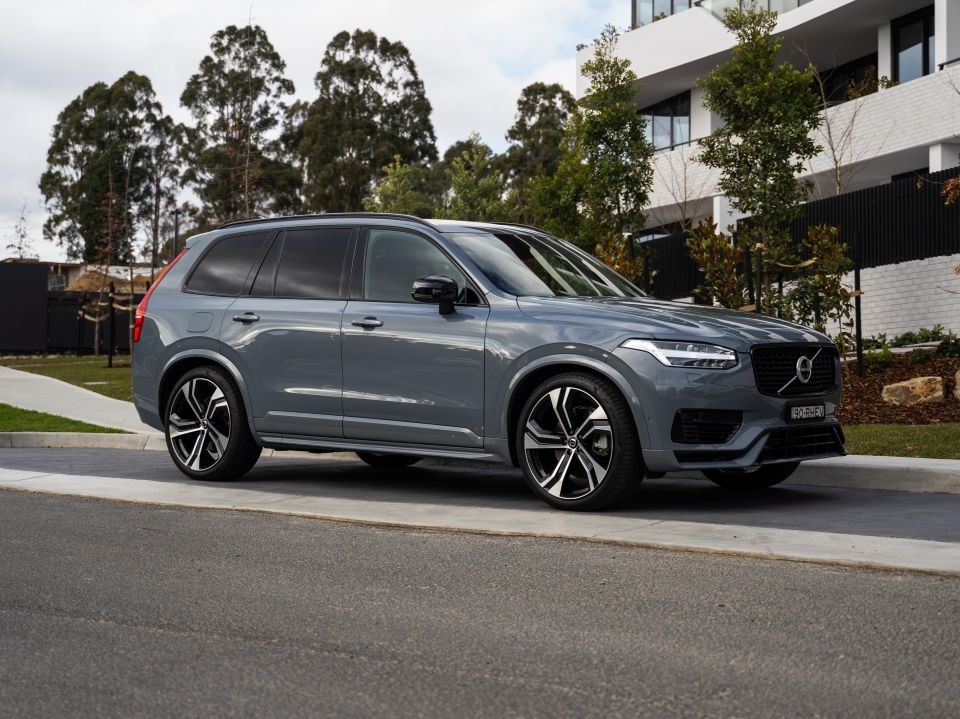
If you’re questioning whether the Volvo XC90 deserves to be in the same sentence as something like an Audi Q7 and BMW X5 – the answer is hell yes.
The big Swede is wonderfully made, lovely to drive, well-featured for the money, offers segment-leading space and practicality, and won’t get lost in a sea of German-badged SUVs at your local private school drop-off.
As a plug-in hybrid, the XC90 offers can can be an EV during the week and a petrol-fired grand tourer on the weekends, all without sacrificing the nameplate’s established family-friendly practicality – provided you can charge it.
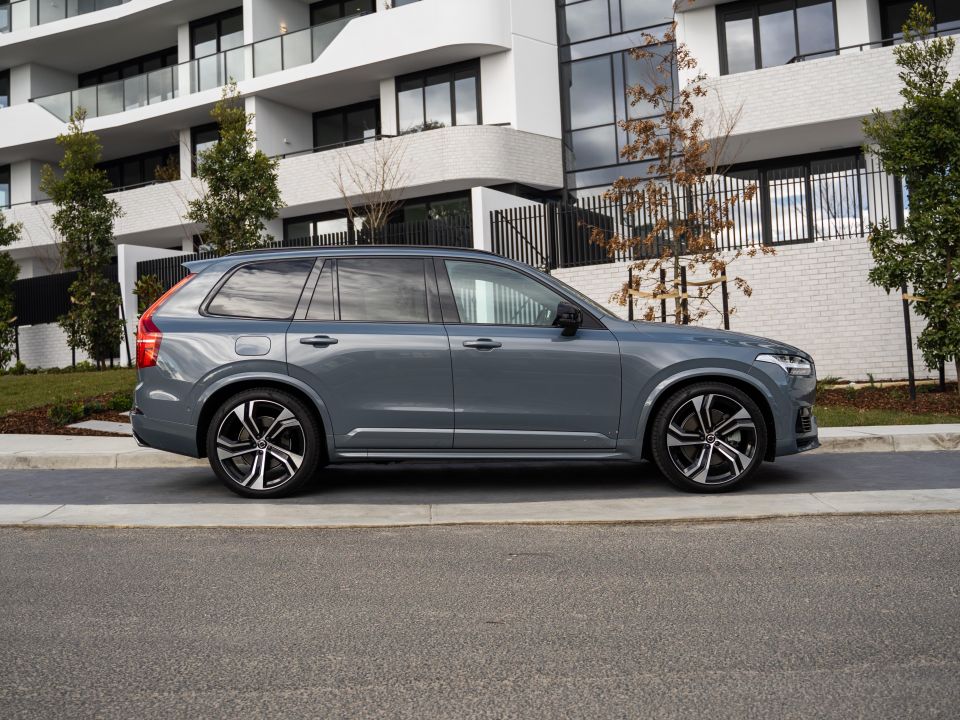
The EV range is short, admittedly, and there’s no escaping its heft. We’d also like smaller wheels that would no doubt improve the ride as well as the EV range.
You can also ditch the PHEV in favour for of the mild-hybrid petrols if you want to save some cash, while keeping the same overall look and feel of the decked out model you see here.
It really goes to show how ahead of its time this second-gen XC90 was when it was revealed in 2014. Seven years on, it’s still competitive against vehicles that have launched in the last couple of years.
While it’s getting on a bit, there’s no doubt the Volvo XC90 is an automotive icon that is more than deserving of your consideration if you’re in the market for a luxurious family SUV.

Click the images for the full gallery by Wesley Loh (@garagetribe on Instagram)
MORE: Everything Volvo XC90
Where expert car reviews meet expert car buying – CarExpert gives you trusted advice, personalised service and real savings on your next new car.
James is an automotive journalist based in Melbourne, Australia. Before joining CarExpert.com.au in 2020, James has worked at leading auto media outlets including Carsales and CarAdvice, as well as at Pulse agency for Ford Australia's communications team. In 2019 James made Mumbrella's 'Top 20 most prolific web authors in Australia' list after publishing 1,360 articles between March 1, 2018 and February 28, 2019 for CarAdvice. James is also an Ambassador for Drive Against Depression – an Australian charity whose mission is to support mental wellness through the freedom of driving and a shared love of cars.


James Wong
5 Days Ago
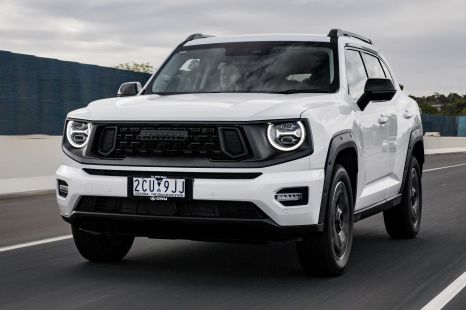

Max Davies
4 Days Ago
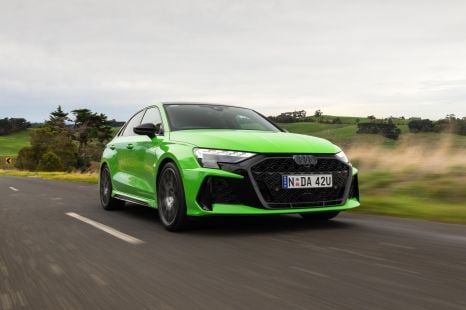

Josh Nevett
3 Days Ago


Josh Nevett
2 Days Ago
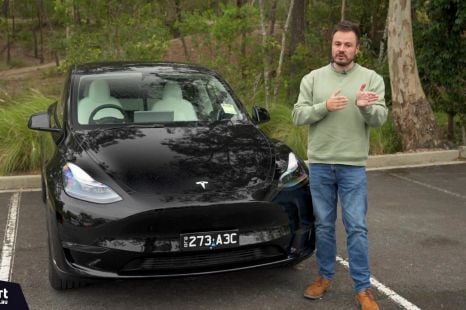

Paul Maric
1 Day Ago


Damion Smy
17 Hours Ago